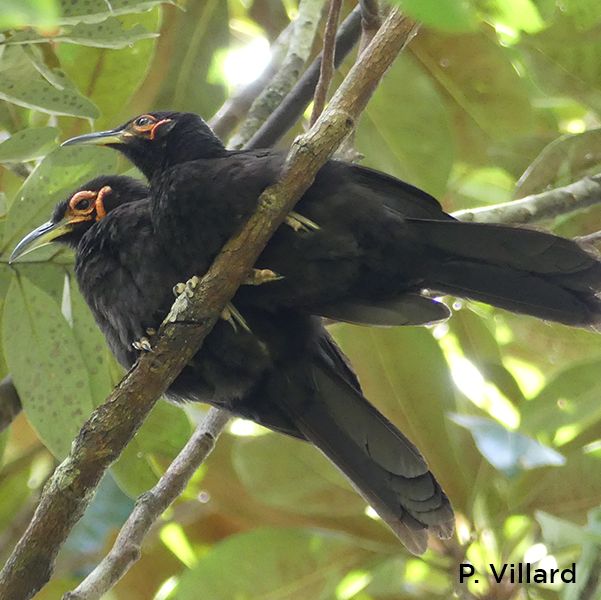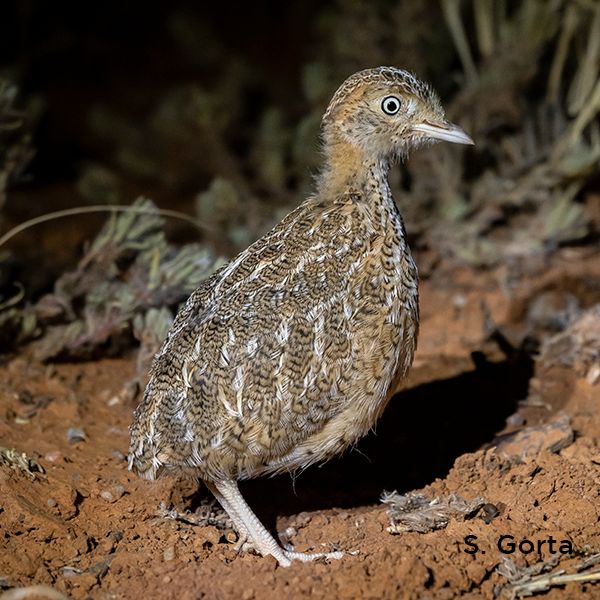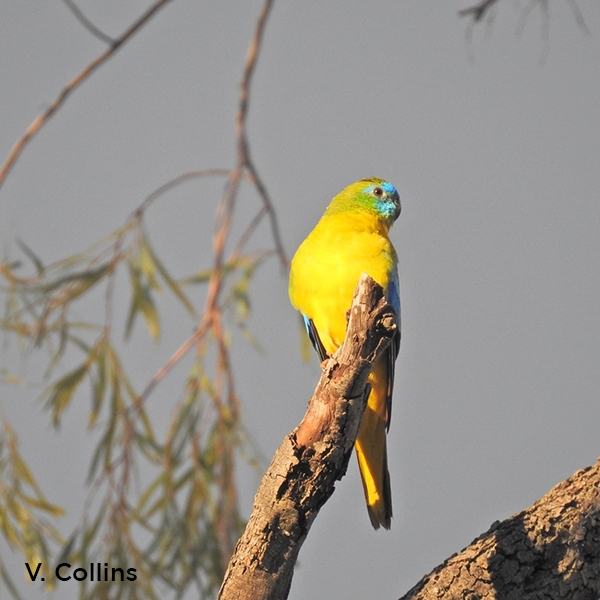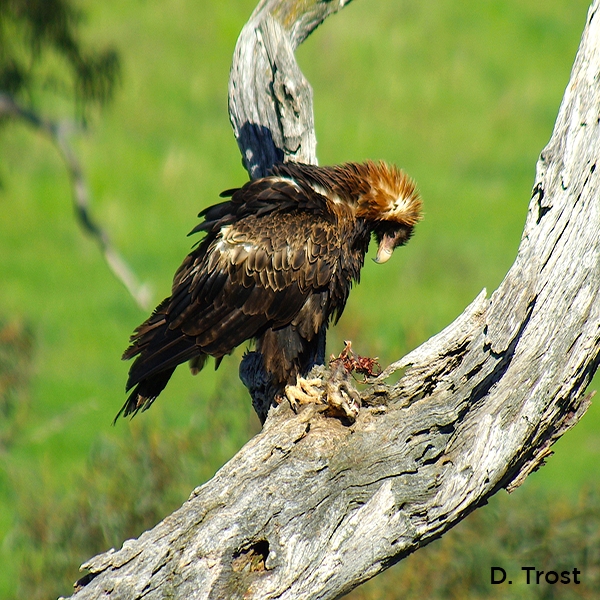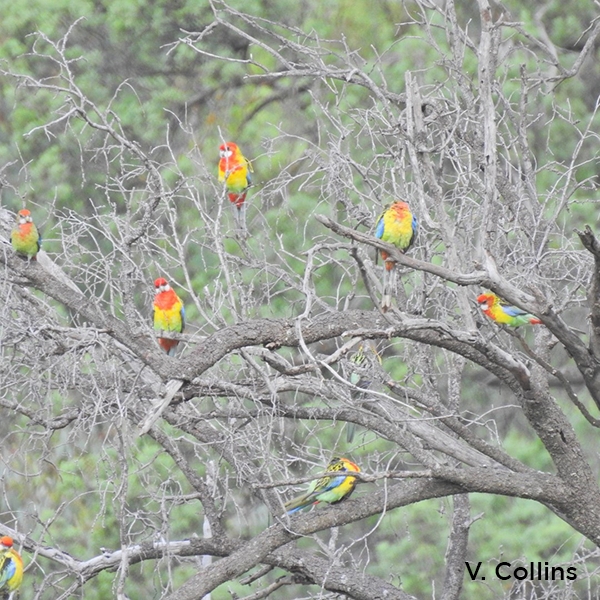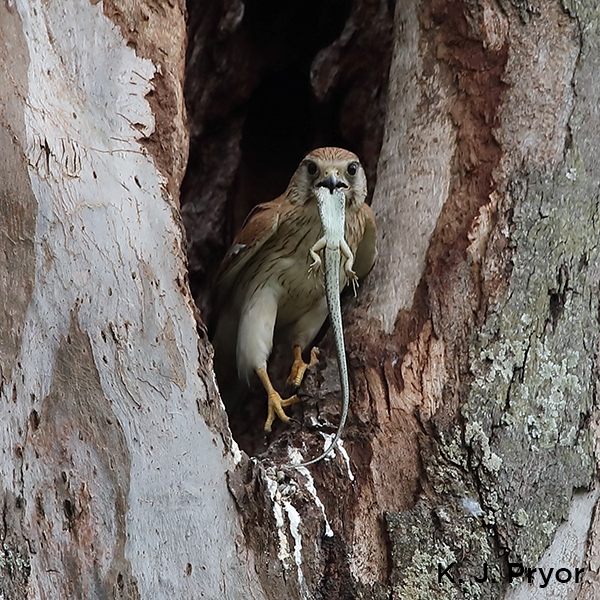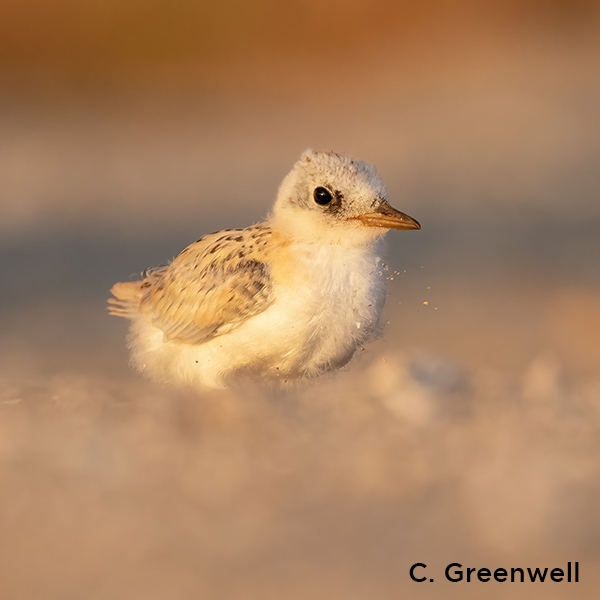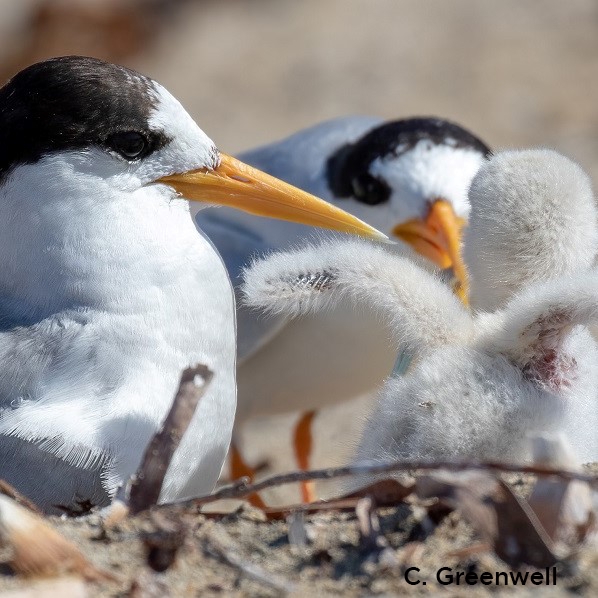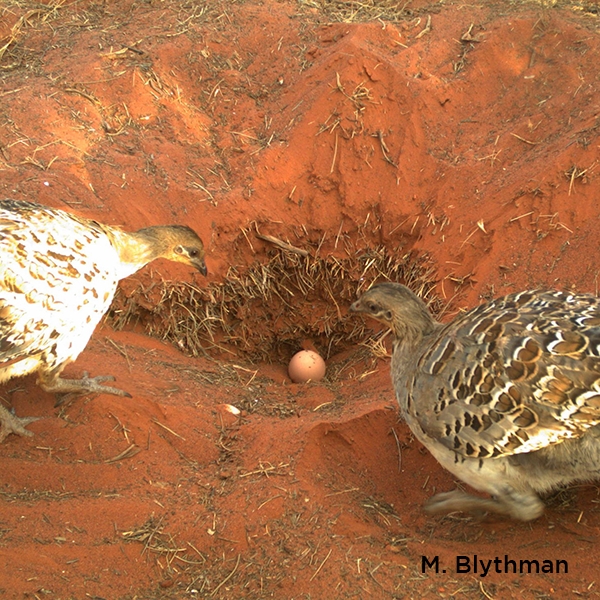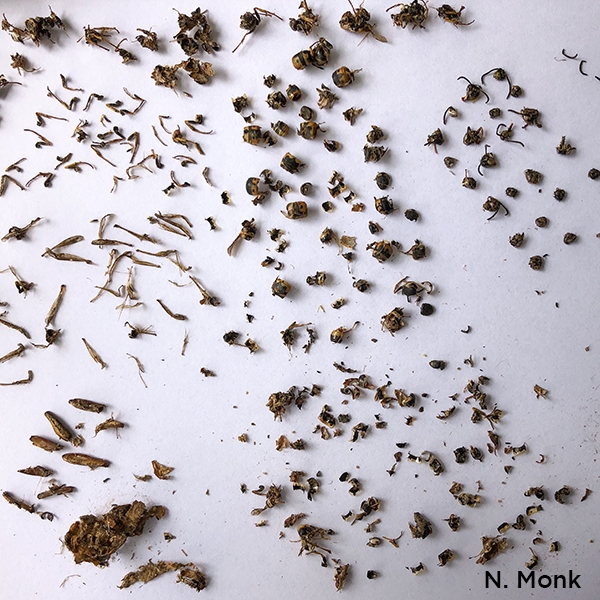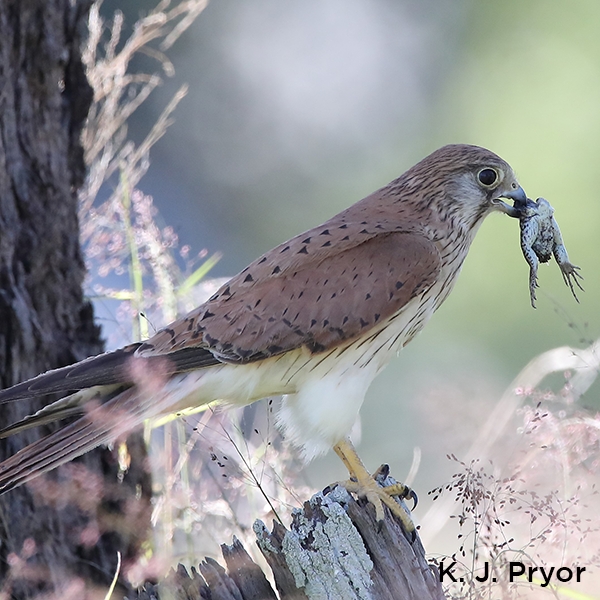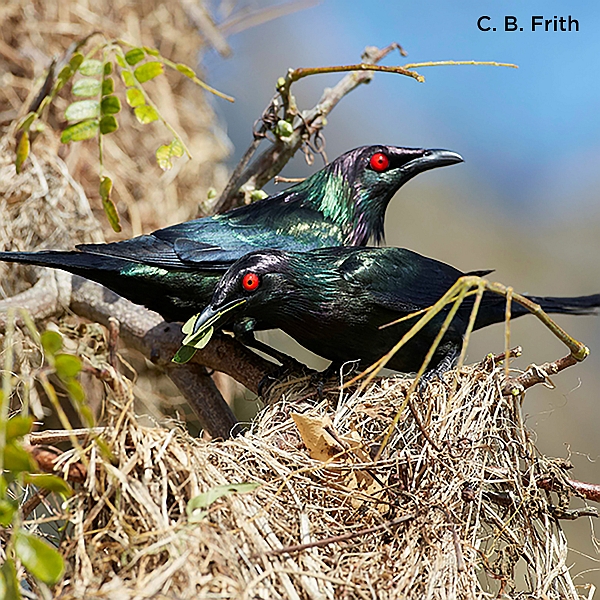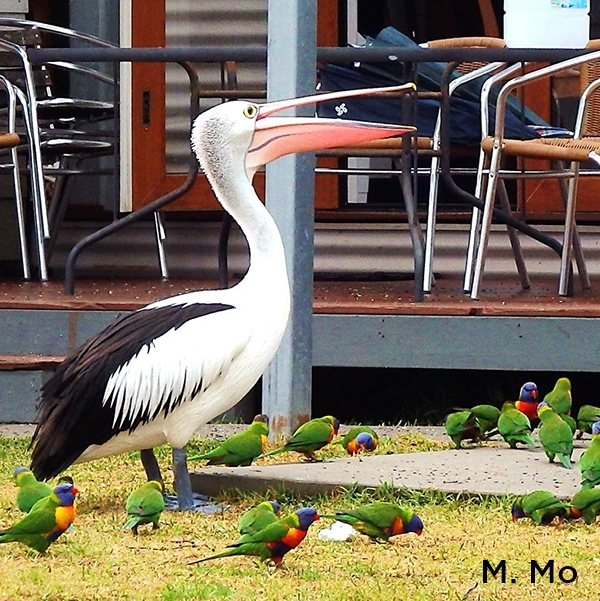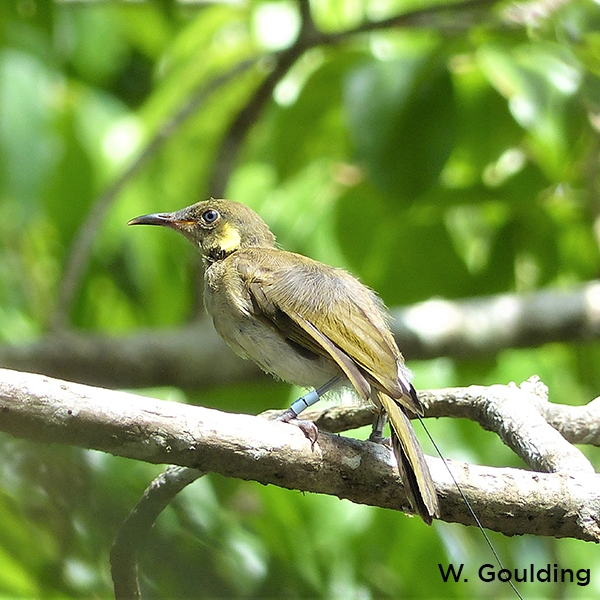Recent observations of Plains-wanderers Pedionomus torquatus at Fowlers Gap Arid Zone Research Station, New South Wales
Matt S. Smith, Simon B.Z. Gorta, Bridget Roberts, Keith E. A. Leggett
Abstract
References
Atlas of Living Australia (2022). Plains-wander occurrence records. Atlas of Living Australia. Available online: https://biocache.ala.org.au/occurrences/search?q=taxa%3A%22Pedionomus+torquatus%22#tab_mapView (accessed 4 May 2022).
Antos, M. & Schultz, N.L. (2020). Climate-mediated changes to grassland structure determine habitat suitability for the critically endangered Plains-wanderer (Pedionomus torquatus). Emu - Austral Ornithology 120, 2–10.
Baker-Gabb, D.J. (1990). An annotated list of records of Plains-wanderers Pedionomus torquatus, 1980-89. Australian Bird Watcher 13, 249–252.
Baker-Gabb, D.J. (1998). Native grasslands and the Plains-wanderer. Birds Australia Conservation Statement No. 1. Wingspan 8 (1), 1–8.
Baker-Gabb, D.J. (2002). Surveys for Plains-wanderers Pedionomus torquatus on Astrebla Downs National Park, Western Queensland. Unpubl. report to Environment Australia, Canberra.
Baker-Gabb, D.J., Antos, M. & Brown, G. (2016). Recent decline of the critically endangered Plains-wanderer (Pedionomus torquatus), and the application of a simple method for assessing its cause: Major changes in grassland structure. Ecological Management & Restoration 17, 235–242.
Baker-Gabb, D.J., Benshemesh, J.S. & Maher, P.N. (1990). A revision of the distribution, status and management of the Plains-wanderer Pedionomus torquatus. Emu 90, 161–168.
Baker-Gabb, D.J., Kirwan, G.M. & Sharpe, C.J. (2020). Plains-wanderer (Pedionomus torquatus), version 1.0. In: del Hoyo, J., Elliott, A., Sargatal, J., Christie, D.A. & de Juana, E. (Eds). Birds of the World. Cornell Lab of Ornithology, Ithaca, NY, USA. Available online: https://doi.org/10.2173/bow.plawan1.01
Baxter, C. (2011). Comparative bird surveys for the Mulyungarie and Bulgunnia pastoral properties in northern South Australia. South Australian Ornithologist 37, 81–95.
Bellchambers, K. & Baker-Gabb, D.J. (2006). A Survey of Plains-wanderers and Thick-billed Grasswrens in the North-east Pastoral Zone of South Australia. Report to South Australian Arid Lands Natural Resources Management Board, Adelaide. Available online: https://cdn.environment.sa.gov.au/landscape/docs/saal/plains-wanderers-and-thick-billed-grasswrens-2009-survey-gen.pdf
Bennett, S. (1983). A review of the distribution, status and biology of the plains-wanderer Pedionomus torquatus, Gould. Emu 83, 1–11.
BirdLife International (2022). Species factsheet: Pedionomus torquatus. Available online: http://www.birdlife.org (accessed
June 2022).Bureau of Meteorology (2022). Monthly rainfall for Fowlers Gap AWS. Bureau of Meteorology, Canberra. Available online: http://www.bom.gov.au/jsp/ncc/cdio/weatherData/av?p_nccObsCode=139&p_display_type=dataFile&p_startYear=&p_c=&p_stn_num=046128 (accessed 4 July 2022).
Collins, S.L., Belnap, J., Grimm, N.B., Rudgers, J.A., Dahm, C.N., D’Odorico, P., Litvak, M., Natvig, D.O., Peters, D.C., Pockman, W.T., Sinsabaugh, R.L. & Wolf, B.O. (2014). A multiscale, hierarchical model of pulse dynamics in arid-land ecosystems. Annual Review of Ecology, Evolution, and Systematics 45, 397–419.
Commonwealth of Australia (2016). National Recovery Plan for the Plains-wanderer (Pedionomus torquatus). Commonwealth of Australia, Canberra.Department of Climate Change, Energy, the Environment and Water (2022). Pedionomus torquatus — Plains-wanderer. Species Profile and Threats Database. Department of Climate Change, Energy, the Environment and Water, Canberra. Available online: http://www.environment.gov.au/cgi-bin/sprat/public/publicspecies.pl?taxon_id=906
(accessed 22 June 2022).
Gerhardy, S. (2021). Another Plains-wanderer sighted at Boolcoomatta. Available online: https://www.bushheritage.org.au/blog/another-plains-wanderer-sighted-at-boolcoomatta (accessed 4 May 2022).
Harrington, G.N., Maher, P.N. & Baker-Gabb, D.J. (1988). The biology of the Plains-wanderer Pedionomus torquatus on the Riverine Plain of New South Wales during and after drought. Corella 12, 7–13.
Hopton, I. & Carpenter, G. (2021). Plains-wanderers in the North West and Nullarbor regions, South Australia. South Australian Ornithologist 45, 118–122.
Jetz, W., Thomas, G.H., Joy, J.B., Redding, D.W., Hartmann, K. & Mooers, A.O. (2014). Global distribution and conservation of evolutionary distinctness in birds. Current Biology 24, 919–930.
Kutt, A.S., Kearney, S.G. & Kern, P. (2021). More than just Night Parrots: A baseline bird survey of Pullen Pullen Reserve, south-western Queensland. Australian Field Ornithology 38, 1–12.
Ley, A., Tynan, B. & Cameron, M. (2011). Birds in Diamantina National Park, Queensland. Australian Field Ornithology 28 (Supplement), 1–208.
Llewellyn, L.C. (1975). Recent observations on the Plains-wanderer, with a review of its past and present status. Emu 75, 137–142.
Mabbutt, J.A., Bailey, P.F., Bell, F.C., Corbett, J.R., Hall, L.S., Milthorpe, P.L., Myers, K., Ngethi, J. C., Parker, B.S. & Sullivan, M. (1972). Lands of the Fowlers Gap–Calindary Area, New South Wales. Research Series 4. Fowlers Gap Research Station, University of New South Wales, Sydney. Available online: https://www.fowlersgap.unsw.edu.au/sites/default/files/FG%20Research%20Series%20No4.pdf
Marlow, N.J. (1992). The Ecology of the Introduced Red Fox (Vulpes vulpes) in the Arid Zone. PhD thesis. University of New South Wales, Sydney. Available online: https://doi.org/10.26190/unsworks/4795
Nugent, D.T., Baker-Gabb, D.J., Green, P., Ostendorf, B., Dawlings, F., Clarke, R.H. & Morgan, J.W. (2022). Multi-scale habitat selection by a cryptic, critically endangered grassland bird — The Plains-wanderer (Pedionomus torquatus): Implications for habitat management and conservation. Austral Ecology 47, 698–712.
Parker D., Nugent D., Baker-Gabb D.J., Antos M. & Garnett, S.T. (2021). Plains-wanderer Pedionomus torquatus. In:
Garnett, S.T. & Baker, G.B. (Eds). The Action Plan for Australian Birds 2020, pp. 257–259. CSIRO Publishing, Melbourne.
Rich, M. (2016). Plains-wanderers in Queensland—a summary of the last 30 years. The Wanderer 1 (2), 2–5.
Rodgers, C. (2002). Bird Report, 2000. South Australian Ornithologist 34, 1–14.

